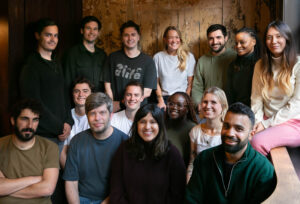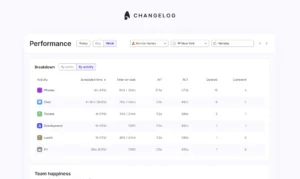
Using generic scheduling software is a red flag for customer service teams

Generic workforce management software doesn’t work for scaling a customer service team and should be avoided if you want to prevent building up queues and backlogs.
It’s mostly built for simpler shift planning in industries like hospitality to manage rotas but not the nuanced nature of planning an inbound customer service team with different channels and activities.
With the real time nature of customer service where customers expect quick responses on channels like the phone and chat, generic customer service team can’t manage scheduling in a way that helps you meet your target response times.
And then there is the wide array of different activities your team can work on: the different support channels, admin tasks, project work, clearing open tickets and training.
Let’s take a look at why we don’t think managers and surfers should be using generic scheduling software:
They just don’t get it…
We’ve made an effort to look into how generic scheduling software works, or doesn’t work for support teams.
This type of outdated, clunky software schedules shifts without a deep understanding of how support teams are organised. It is not enough to tell a surfer when they should be at work. With the demanding nature of managing a service team to balance meeting response times across different channels, as well as the different level of mental strain of different channels and tasks, intraday planning is extremely important. And it needs to be accurately done and integrated with forecasts that are built to plan how you organise your team.
Team dynamics
Every customer service team is unique. Some surfers on the team have been working for years. They can handle anything a customer might throw at them. Others are newer and can only work on specific activities, tasks, channels or topics.
It is key that surfers are partnered together smartly on shifts. This is to complement their experience levels.
Unexpected things happen on shifts. Those who are newer to the job might encounter a difficult scenario that they are not prepared for. Maybe that’s an angry customer or someone who is requesting a discount the surfer cannot give.
For that reason, veteran surfers should always be on standby. They might need to jump in and handle tough situations.
Team dynamics and surfers themselves need to be understood before any scheduling takes place. Generic workforce management or shift planning doesn’t have the ability to account for these dynamics.
Forecasting
This is the projection of how busy your surfers will be at any given time. Unfortunately, proper forecasting is nowhere to be found within generic scheduling suites. As a software dedicated to Customer Service teams, when forecasting, Surfboard examines the historical data of your customer inflow as well as upcoming special events. We extract that data from your phone and ticketing platform in order to get a picture of when your teams are busiest.
From there we look at your ticket medium (whether that’s phone, chat, email or social media) and ticket priority ratings.
Based on this information we predict future inflow for eight weeks to come. Forecasting informs a lot of what we do at Surfboard. From planning shifts to activities.
(Click here if you want to see in detail how our forecasting tool works).
Activities
Shifts require surfers to fulfil two basic categories of activities: customer support tasks, and admin and training tasks.
Customer assistance tasks will take up most of your surfers’ working hours. It is when they will be helping any customers who are calling in, emailing, or texting on social media. Your scheduling software needs to schedule your team on these different tasks so you are always covered to respond to customers quickly. But this has to be done in a way that avoids having the same people work on the same channels, like phones, which can cause burnout.
Admin tasks occur when surfers are not dealing with customers directly. This can include following up on orders, deliveries or fixing accounts. Generic software naively assumes this just happens. That means it either doesn’t get done or surfers have to use their breaks to complete these tasks. At Surfboard, we schedule in admin time based on your requirements.
You can trust Surfboard over the generics
Before Surfboard built a single tool, we made sure that we understood what was missing in the workforce management software landscape. As we developed our features, we realised that the other software in our space is either too broad, not adequately fitting the needs of a support team, or too bloated, cobbling together too many features without getting basic scheduling right.
Surfboard’s team planning software considers things like forecasts, activities, and team dynamics when suggesting shifts and schedules. It’s what makes us a world-class customer experience platform.
We want to distance ourselves completely from generic scheduling software. We guarantee that Surfboard’s features are:
- Fully automated to prevent you from exporting templates every time you want to create shift plans. When it comes to planning, we do all the heavy lifting.
- Fair in the scheduling that we suggest. We have built rules into our software that ensures even distribution of shifts amongst surfers. We also allocate shift plans eight full weeks in advance.
- Simple. Anyone can learn how to use Surfboard in no time at all. It’s totally intuitive and it only takes minutes to get going.
Feel the difference yourself
It’s time to move on from your generic scheduling software. Leave some details below to get a free product demo.



